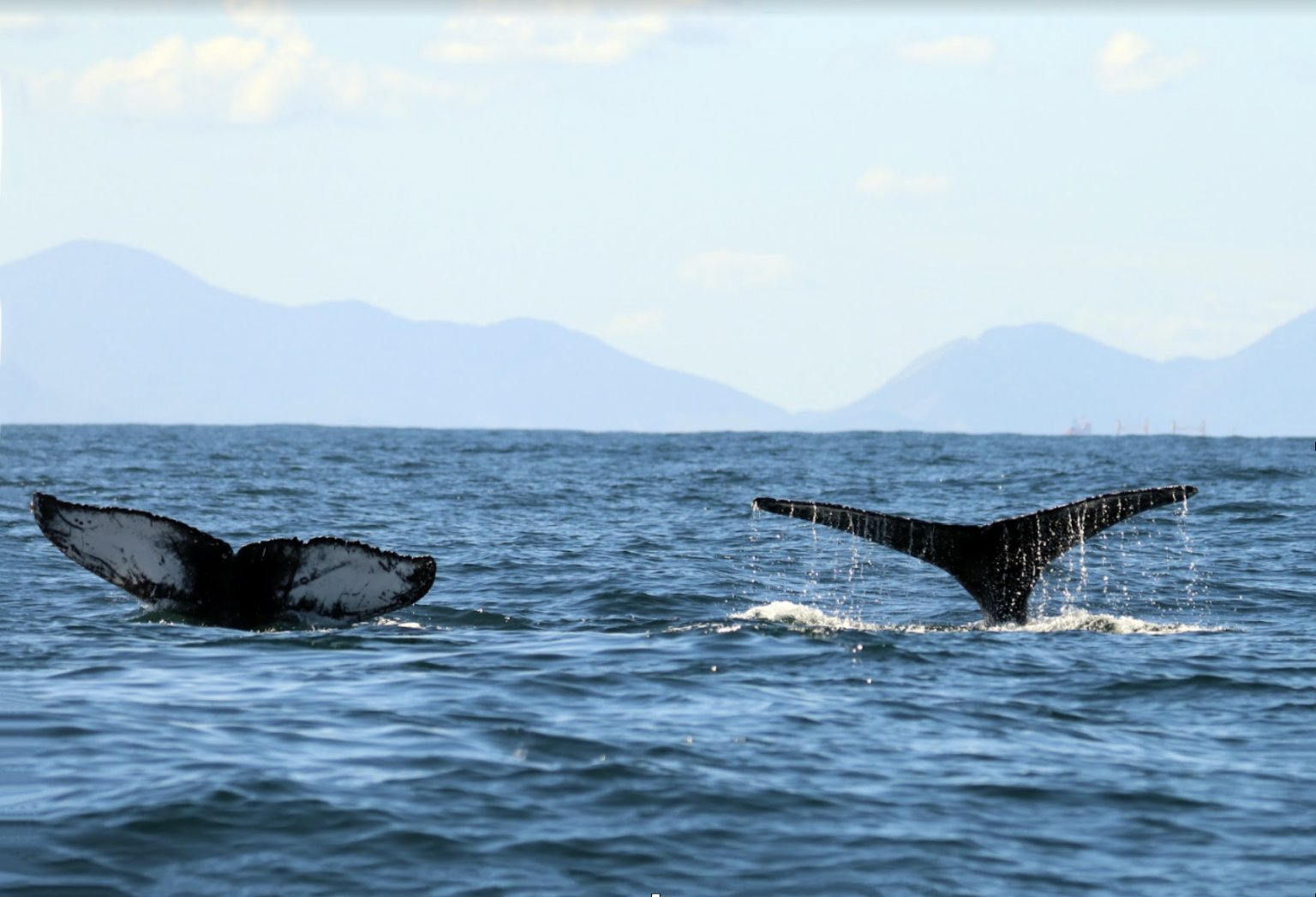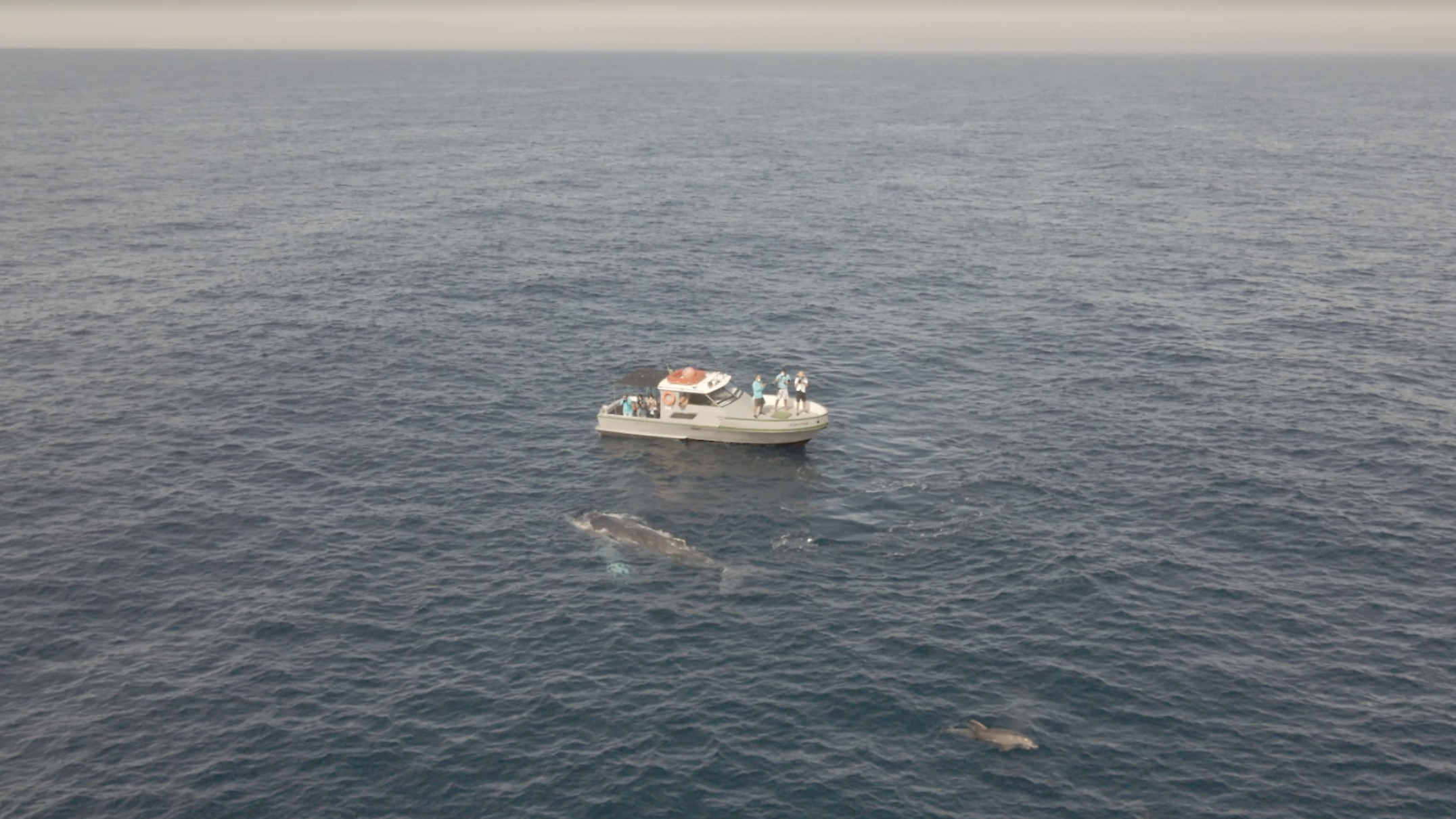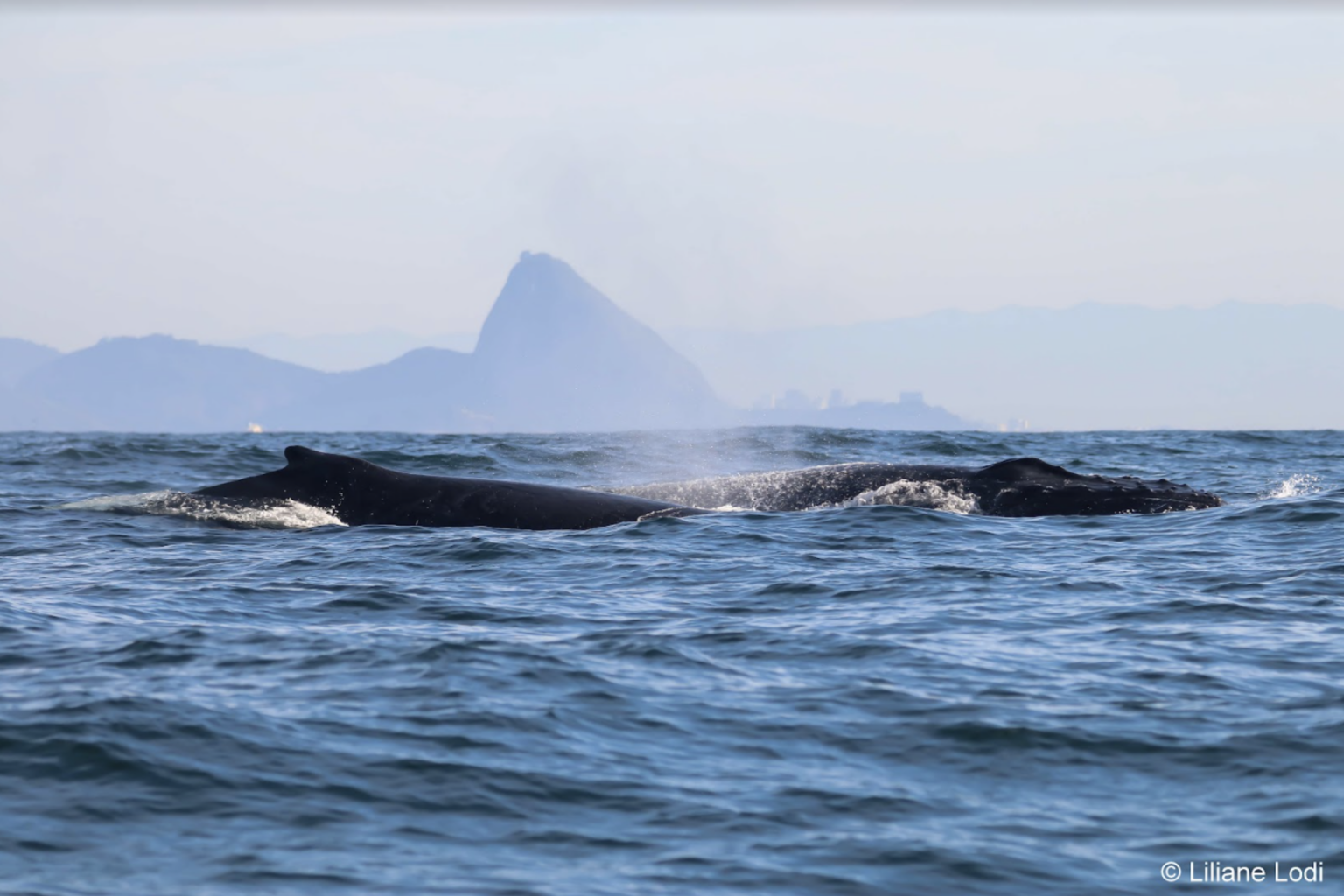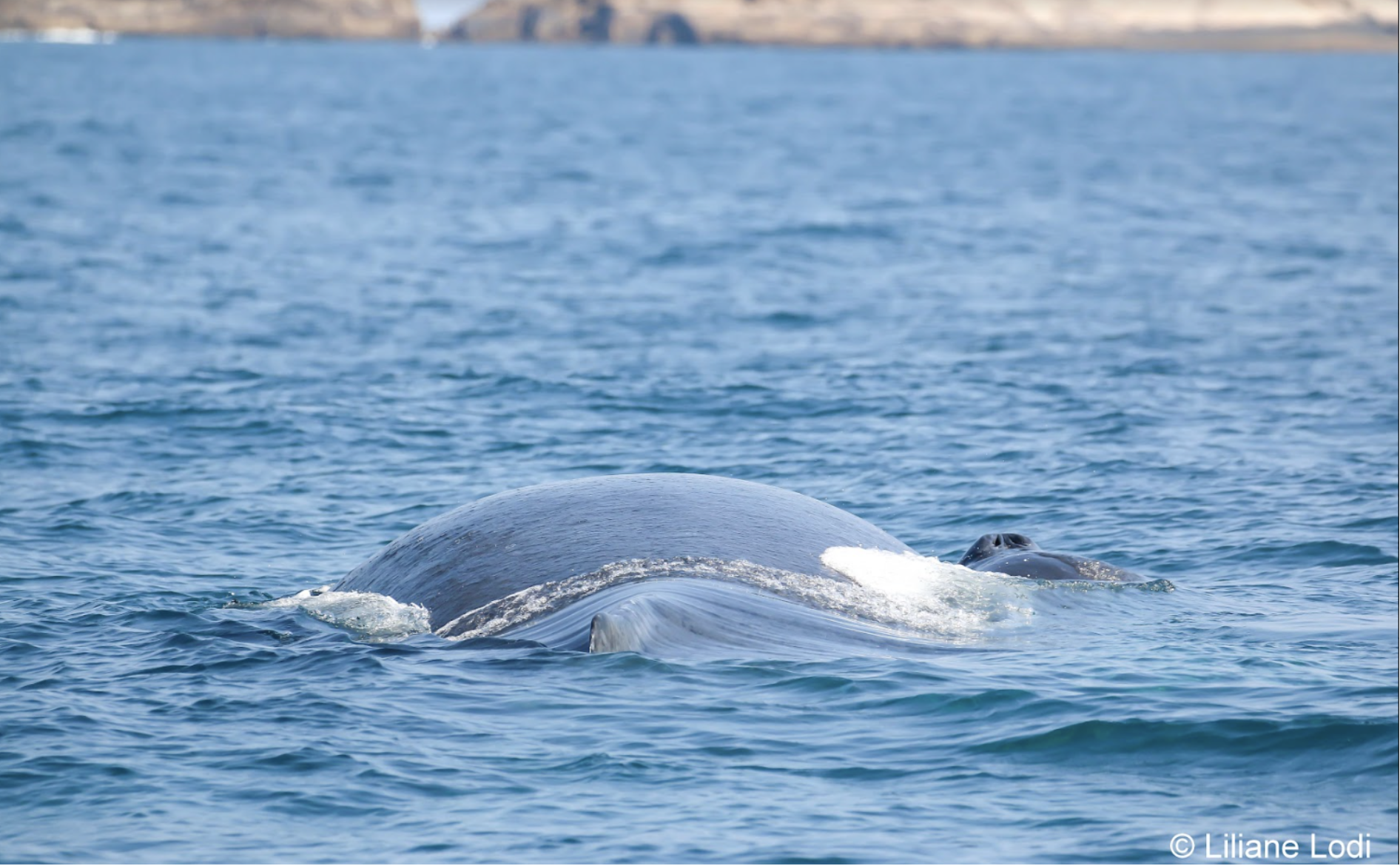Yearly, migrating humpback whales (Megaptera novaeangliae) aggregate to breed from June to October along the Brazilian coast. The Abrolhos Bank, the first Mission Blue Hope Spot in Brazil, is the most important breeding and calving ground for the species in the southwestern Atlantic. The whales that breed in Abrolhos are a population that migrates from their feeding grounds in the Georgia and Southern Sandwiches region. They seek warmer waters to reproduce and care for their calves during the winter. While heading to warmer waters, the humpback whales also cruise in great numbers along the Rio de Janeiro city coast.

For more than 10 years, Ilhas do Rio Project researchers, led by Dr. Liliane Lodi, have been monitoring the cetaceans on the Rio de Janeiro waterfront. In 2017, the team recorded many adults traveling together at high velocity off the coast of the Cagarras Islands for the first time. They suggested that the humpback whales use the area yearly as a natural migratory corridor, moving north toward their breeding grounds.
These initial findings reinforced the relevance of the Cagarras Islands and Surrounding Waters Hope Spot once they characterized the region also as critical habitat for the humpback whales’ conservation. Since 2021, the Ilhas do Rio Project has been monitoring this significant blue corridor during the winter when humpback whales come ashore from the subantarctics’ cold waters.
The season in 2022 revealed terrific surprises for the researchers on the Cagarras Islands and Surrounding Waters Hope Spot. In just 43h of sampling effort between July and August, Dr. Lodi’s team recorded 31 groups of humpback whales, including solitary animals, to sights of seven individuals together.

There were registered competitive/reproductive groups with five to seven whales. In these groups, a nuclear female is followed closely by the principal escort, challengers, and secondary escorts. It is a curious scene because when multiple escorts organize around a single female, the group typically travels rapidly. And at the same time, the subsets of the males compete vigorously and aggressively to obtain and defend the position closest to the female.
Surprisingly, when the migrating whale sights were decreasing at the beginning of August, the researchers got their best moment in the fieldwork. They recorded a newborn with its mother humpback whale. The calf had lighter color, and his dorsal fin was still folded. This astonishing sight is the first record of a humpback whale newborn in Rio de Janeiro city waters.

“The occurrence of competitive groups and a newborn calf are promising indications. Rio de Janeiro may become in the future a breeding and calving ground, as the Abrolhos Bank”, says Dr. Liliane Lodi.
It is worth mentioning the abundance of this humpback whales’ breeding stock has been increasing over the years. Since 2014, M. novaeangliae does not figure in the Brazilian List of Endangered Species.


Lastly, the researchers identified 18 individuals in this season. Humpback whales have a black and white color pattern of the lower caudal fin region unique to each individual, like a fingerprint or bar code. Thus, the scientists use photo-identification of the individuals and compare the records in different cetaceans catalogs, including the Happywhale (https://happywhale.com/home).

“We had three matches of individuals identified in 2022 with a time range of two, five, and nine years between the different records in Brazil in other catalogs”, describes Dr. Lodi.
This type of result is essential to trace the life history of these animals over the years in the Brazilian Hope Spots.
Big round applause for Dr. Liliane Lodi and the Ilhas do Rio Project researchers in helping the humpback whales conservation.
Check out the video on HUMPBACK WHALES’; BLUE CORRIDOR ON THE CAGARRAS ISLANDS AND SURROUNDING WATERS

Faça a sua doação através dos nossos dados bancário abaixo:

Faça o escaneamento do QR Code do Projeto Ilhas do Rio no aplicativo do seu banco e comece a salvar as espécies